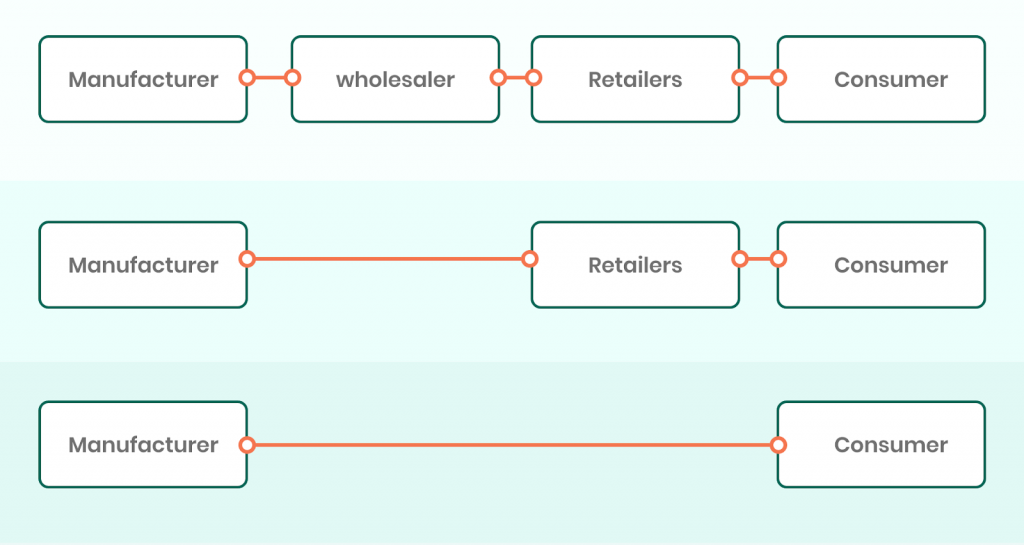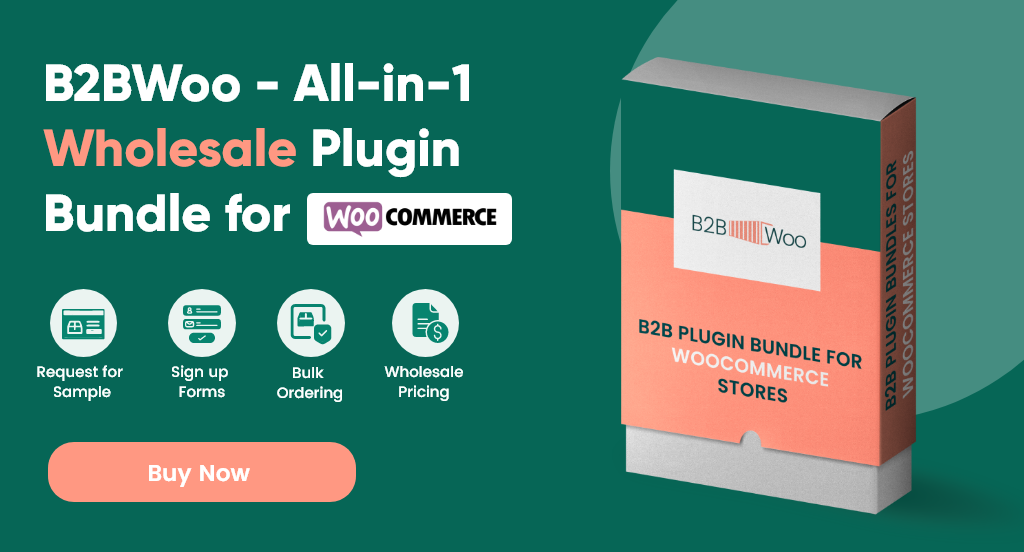Wholesale price Vs retail price, we’ll take you through the concepts of both these prices in this blog. While many may think that price is an objective concept, it is not. Setting up prices and choosing a pricing strategy depends on the industry you are operating in and many other factors.
Before we get into the nitty-gritty of wholesale and retail prices, it is best to understand the concept of the channel of distribution.
Typically, there are three channels of distribution.
- Manufacturers sell their products at a wholesale price to distributors or wholesalers, after which these products are sold to retailers at a marked-up price. Retailers then sell the products at a retail price to the end consumer.
- Manufacturers sell to retailers and skip the distributors.
- Manufacturers sell directly to the end consumers and skip both retailers and wholesalers in the middle. This is called D2C – Direct 2 Consumer.

Both retailers and wholesalers buy products in bulk quantities at wholesale prices. However, both of them pay different prices depending on the channel of distribution being used.
When the manufacturer sells directly to customers, the price is usually lower than what’s being charged having a wholesaler in the middle. Because the wholesaler is also going to add their margin of profit to the price as well.

Defining Wholesale Price and Retail Price
Wholesale price is the per-unit price that is set and charged by manufacturers for a product.
On the other hand, the retail price what’s paid by the end consumers. This price is much higher than the wholesale price paid by retailers when acquiring the product.
Manufacturers may also recommend retailers to sell a good at a particular price. This is called MSRP (manufacturer’s suggested retail price). MSRP is usually based on the popularity of a product.
For example, Hyundai (an automaker) suggests dealerships sell cars at their recommended price.
Wholesale Price Vs Retail Price
Calculation of Wholesale Price and Retail Price
If you look at the wholesale price and retail price calculations mathematically, you’ll notice that they are both similar. They both have similar cost elements added together to come to the final price.
Add the cost of materials to the total labor cost and total overheads along with the profit margin. This gives you the wholesale price and also the retail price.
The margin of profit (MOP) kept in wholesale price is less than MOP in retail price. For example, if your cost of production is $10 for a product then adding an additional $2 as a margin of profit would result in a wholesale price of $12. The per-unit gross profit is to cover the expenses of the business and provide you with a net profit in the end.
However, if the retailer is buying the product for $12, they will add their own MOP given that he’s in business to make a profit as well. Let’s say the retailer adds another $12 as MOP, which doubles the selling price to $24, then the retailer will be making a gross profit of $12 per unit.
The technical term for this approach, where the retailers charge a price that is double the wholesale price is “keystone pricing”.

Types of Pricing Methods/Strategies
Your pricing strategy is a significant aspect of your business and determines how much profit you make. Here are some common pricing strategies:
Cost-Plus Pricing
In this strategy, the price of the product is determined by adding a certain percentage of markup to the production cost of the product. The markup percentage is the per-unit profit that you are making in this strategy.
A simple way to calculate the price using this strategy is to first calculate the total cost of production. You then divide the production cost by the total number of units produced, which will give you the cost per unit.
Multiplying the cost per unit with the percentage of mark up will provide you with the amount of mark up, which you then add to the cost per unit. This will result in your product price.
Competitive Pricing
Competitive pricing is when you set your product price on the basis of the price your competitors are charging.
This strategy works usually when your competitors are also selling a similar product. This eCommerce pricing strategy is heavily dependent on your market research and data as compared to your cost of production.
Value-Based Pricing
Value-based pricing is when you set the price on the basis of your end user’s perception.
If consumers feel that your product is worth the price you’ve set for your product then it doesn’t matter how high or low the price of the product is.
Manufacturers position their products in the right manner to take advantage of this strategy and keep a higher MOP.
However, this strategy requires you to sell a product that offers unique features. Moreover, thorough market research is also needed to understand the customer’s perception of your product.
Price Skimming
Price skimming is when you charge a high price for your product upon entering the market with a new product. Based on the market demand and response, these prices are lowered to increase the sales volume.
This strategy normally targets customers who are willing to adopt early and buy your products for a higher price.
You can normally see this strategy on the launch of every new Sony Playstation in the series.
Penetration Pricing
This pricing strategy allows a business to enter the market by offering a price less than the competition. This helps them attract customers. Once your business captures a sizeable market share, you can increase the price.
Walmart uses this pricing strategy to gain a larger share of the market and provide products at unmatchable prices to their customers.
Dynamic Pricing
A dynamic pricing strategy allows you to set a flexible price and based on the market’s response and consumers’ demand.
This pricing strategy enables you to update your existing prices at a moment’s notice in response to the customers’ response.
Most businesses use this strategy to keep their prices flexible because of the nature of their products or services such as Airline ticketing and hotel booking platforms. You can see the seasonal variations in their prices as a result of seasonal demand spikes and dips.
Minimum Advertised Pricing
When a company decides to restrict its wholesalers through a contract, to not advertise a price less than the decided minimum price, it falls under the pricing strategy known as minimum-advertised pricing.
This helps in preventing your wholesale customers to compete with each other based on price.
Apple uses this pricing strategy to prevent its retailers from giving huge discounts.
However, businesses rarely use this strategy.

Wholesale Price vs Retail Price: Which Strategy Should You Choose?
Choosing the right pricing strategy is one of the most significant factors for the success of your business. However, it depends purely on your target audience. If you’re selling directly to end consumers, you’ll need a strategy that helps you position your product in the desired manner.
In the end, there will always be customers who won’t be happy with your pricing strategy. But you just need to focus on the strategy that helps you attract your target audience and gain the lion’s share of the market.
Want to create a wholesale eCommerce channel? Get B2BWoo, the most complete WooCommerce B2B solution for getting started with wholesale eCommerce easily, affordable, and quickly.
